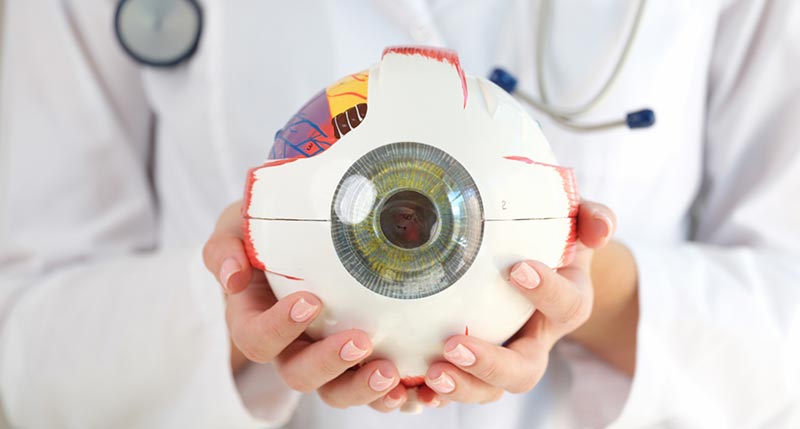The Pros and Cons of Various Refractive Surgeries for Boosted Eyecare

LASIK Surgical Treatment
LASIK surgery is a typically performed refractive treatment that aims to deal with vision issues such as farsightedness, astigmatism, and nearsightedness. This medical technique has actually gained popularity due to its effectiveness in supplying people with clearer vision and decreasing their reliance on glasses or call lenses. Throughout the treatment, a slim flap is created on the cornea, and a laser is used to improve the underlying tissue, dealing with the refractive error. The flap is then rearranged, enabling quick healing and very little pain for the patient.
One of the key advantages of LASIK surgical treatment is the quick improvement in vision experienced by numerous patients. It is important for people considering LASIK surgical procedure to undergo a comprehensive examination by an eye care expert to identify if they are suitable prospects for the procedure.
PRK Procedure
The PRK treatment, likewise understood as Photorefractive Keratectomy, is a kind of refractive surgical procedure that intends to fix vision problems similar to LASIK surgery. Unlike LASIK, which involves creating a flap in the cornea, PRK functions on the surface layer of the cornea.
One of the advantages of PRK over LASIK is that it eliminates the risk of flap-related issues because no flap is created during the surgical treatment. This can be beneficial for individuals with slim corneas or those associated with call sports where eye trauma is an opportunity. The healing time for PRK is normally longer compared to LASIK, as the outer layer of the cornea requires time to regrow after the procedure. Regardless of the longer recovery duration, PRK can be an ideal choice for individuals looking for vision adjustment surgery.
SMILE Surgical Treatment
An advanced refractive surgical procedure technique gaining popularity in the area of ophthalmology is SMILE Surgical procedure. Tiny Incision Lenticule Extraction (SMILE) is a minimally invasive procedure that fixes vision by reshaping the cornea using a femtosecond laser. Unlike traditional LASIK surgical procedure, SMILE Surgery involves creating a tiny incision in the cornea to draw out a lenticule, which causes less disturbance to the corneal structure and possibly quicker recovery times.
Among the primary advantages of SMILE Surgical procedure is its ability to deal with nearsightedness (nearsightedness) and astigmatism with high accuracy, causing excellent visual results for individuals. The minimally invasive nature of the treatment additionally reduces the danger of complications such as dry eye syndrome, making it a desirable option for people seeking refractive surgical treatment.
LASEK Technique
Having explored the advantages and factors to consider of SMILE Surgical procedure, an additional significant refractive surgical treatment strategy worth checking out is the LASEK Technique. LASEK, which stands for Laser-Assisted Subepithelial Keratectomy, is a kind of laser eye surgery that aims to deal with refractive mistakes such as myopia (nearsightedness), hyperopia (farsightedness), and astigmatism.
Unlike LASIK, LASEK does not entail developing a corneal flap. Rather, throughout a LASEK treatment, the surgeon uses a diluted alcohol solution to loosen the thin external layer of the cornea, referred to as the epithelium. This layer is after that carefully relocated aside to permit the laser to improve the underlying corneal cells. Once the cornea has been improved to the wanted level, the epithelial layer is repositioned.
One of the main advantages of LASEK is that it can be ideal for people with thin corneas that may not be great prospects for LASIK. Furthermore, LASEK usually causes marginal post-operative pain and a quicker recovery time compared to PRK. Nevertheless, the aesthetic healing procedure with LASEK might be somewhat longer than with LASIK.
Implantable Contact Lenses
Implantable Call Lenses provide a lasting vision adjustment solution for people looking for an option to typical call lenses or glasses. These lenses, likewise called phakic intraocular lenses, are surgically put into the eye to fix refractive mistakes such as nearsightedness (nearsightedness), hyperopia here are the findings (farsightedness), and astigmatism. eye doctors in andalusia. Unlike standard get in touch with lenses that rest on the surface area of the eye, implantable contact lenses function within the eye itself, giving clear vision without the demand for everyday upkeep or elimination
Among the essential benefits of implantable get in touch with lenses is their durability. When put, they browse around this web-site can remain in the eye forever, supplying constant and steady vision correction. Additionally, these lenses can be an excellent alternative for people who are bad prospects for laser eye surgery or who like a reversible vision improvement procedure.
Nevertheless, implantable call lenses do lug some dangers, including the capacity for cataracts or boosted eye pressure. It is critical for people considering this alternative to seek advice from with an eye treatment professional to figure out if implantable call lenses are the ideal option for their certain needs and eye wellness.
Verdict
In verdict, each type of refractive surgery has its own advantages and disadvantages. LASIK surgical treatment is popular for its quick recovery time, while PRK procedure may be suitable for people with slim corneas.

Overall, SMILE Surgical procedure presents an encouraging choice for people looking to boost their vision with refractive surgery.